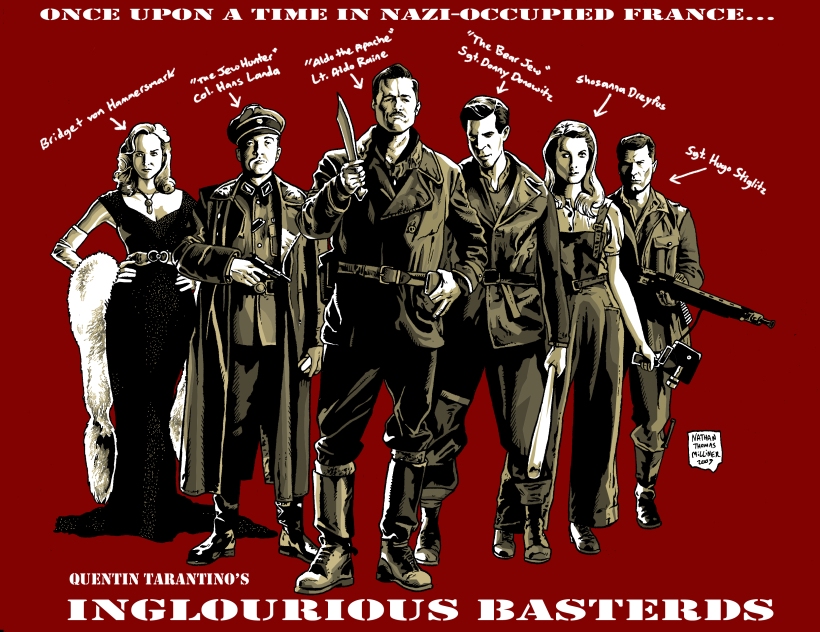
Directed By: Quentin Tarantino
Written By: Quentin Tarantino
Cast:
Brad Pitt – Lt Aldo Raine
Christoph Waltz – SD Standartenführer Hans Landa
Diane Kruger – Bridget von Hammersmark
Michael Fassbender – Lieutenant Archie Hicox
Daniel Brühl – Private First Class Fredrick Zoller
Eli Roth – Sergeant Donny “The Bear Jew” Donowitz
Til Schweiger – Sergeant Hugo Stiglitz
Julie Dreyfus – Francesca Mondino
August Diehl – Major Dieter Hellstrom
Mélanie Laurent – Shosanna Dreyfus
Sylvester Groth – Joseph Goebbels
Language: English Genre: War; Thriller; Drama
Tarantino’s Inglourious Basterds takes liberties with spellings and with history. Yet, does it in such a convincing manner that you need to rack your brains to remember things did not pan out exactly that way. It doesn’t help that Tarantino also produced a related black and white film that is at the centre of this film.
The film follows a chapter-wise narrative similar to that in Kill Bill. It depicts the violence that characterised the Nazi regime and the kind of witch hunt that ensued to eliminate the Jews. The menace of the SS is personified in the character of Hans Landa (Chirstoph Waltz). What makes him most frightening, is his polished demeanour and his amoral sociopathic tendencies.
It goes to prove that the truly terrible aspect of any ideology-regime that functions on torture is that the people who might be its most feared supporters (for their immense capacity for brutality) might not actually believe the ideology, but use the regime as a space to let loose their violent impulses.
However, the film also talks of the counter violence that could have and did occur. The group that was central to it were dubbed the Basterds. They comprised of Jews avenging crimes against their people. They were led by Lt. Aldo Raine (Brad Pitt) an American soldier of Apache Indian origin, who wanted his men to get him a ‘100 Nazi scalps’. Having scalps is a sign of bravery and also honour in the Native American culture. Nevertheless, it is a symbol of violence.
There is an important reference to rats in the film. Rats are important because on a ship when they start running away it means the ship is going to sink. Also rats scurry and hide so that they are not found out and killed. You realise when you watch the movie that there is a very thin line separating the rat from the righteous human who wants to kill it. For a time could come, when you could be considered a rat by someone else because of some preferences you have.
Tarantino as always presents violence with comic-horror. It takes away your revulsion for the violence or if not that, numbs you to the brutality on display – following a very Kubrick tradition. However, more than the violence on either side, it is that Tarantino presents the idea of history as a construct. The idea that history is written by the winner is known. Much of the history that we study has that bias. But how about reinterpreting history to serve some purpose?
Governments have done and still do modify history to present a better version of their country or the political parties they represent. This is dangerous because the children who learn this grow up with a skewed sense of the past and hence become easy targets of brainwashing.
Inglourious Basterds throws up a debate on history and how it is a construct, how far ideologies are truly followed and how the metaphor of the rat plays out from the first chapter to the last.